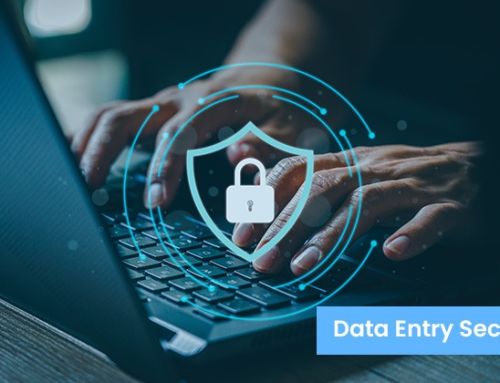In today’s data-driven world, the quality of data is paramount for making informed decisions and deriving meaningful insights. However, the process of obtaining clean, reliable data is often fraught with challenges. Data cleaning, the process of identifying and rectifying errors, inconsistencies, and inaccuracies in datasets, is a crucial step in the data preparation pipeline.
In this article, we’ll delve into the multifaceted challenges of data cleaning and explore strategies to address them effectively.
What Causes Dirty Data?
There are many factors that contribute to the data contamination. Data corruption is caused by straightforward typing errors, technological issues, inconsistent formatting, such as using different abbreviations for street names, and external events such as cyberattacks.
However, it’s not always due to mishaps or human error. Inconsistencies and disorganized datasets can result from poor data management procedures, such as the absence of explicit criteria for data collection.
To mitigate the impact of dirty data, organizations need to implement stringent validation protocols, regular data audits, and robust data governance guidelines to ensure data reliability and integrity.
Challenges of Data Cleaning
Combining Data and Finding Duplicates
- Integration Challenges: When data from disparate sources is combined, integration problems like inconsistent data types or mismatched schemas frequently arise.
- Duplicate Records: In datasets, duplicate items can skew analysis outcomes and impair judgment. To guarantee data integrity, duplication detection and resolution algorithms must be implemented.
Consistency and Quality of Data
- Inconsistent Formats: Datasets can include information in a variety of formats, including text encoding, date formats, and numerical representations. For accurate analysis, these formats must be standardized.
- Missing Values: Missing data is a prevalent problem that can be caused by a number of things, including intentional omission, sensor problems, and insufficient data entry.
- Erroneous Entries: Outliers, typos, or invalid entries in the data might distort analysis and produce incorrect findings. It is essential to find and fix these mistakes by hand or automatically using algorithms.
Domain-Specific Challenges
- Domain Knowledge Requirements: Understanding the domain context is essential for effective data cleaning, as domain-specific nuances and intricacies may impact the interpretation and treatment of data errors.
- Regulatory Compliance: Data cleaning in regulated industries such as healthcare or finance requires adherence to strict regulatory guidelines and privacy regulations, adding an additional layer of complexity to the process.
Scalability and Performance
- Large-Scale Data: Large-scale dataset cleansing presents major computational resource and processing time issues due to the exponential growth of data quantities.
- Performance Optimization: Processing-intensive data cleaning procedures are sometimes necessary, particularly when handling elaborate data structures or complicated transformations.
Evolving Data Ecosystem
- Dynamic Data Sources: Data landscapes are constantly evolving, with new data sources, formats, and technologies emerging rapidly. Adapting data-cleaning processes to accommodate these changes requires agility and continuous learning.
- AI and Automation: The advent of artificial intelligence (AI) and machine learning (ML) has led to advancements in automated data-cleaning techniques. However, deploying AI-driven solutions requires careful validation and monitoring to ensure accuracy and mitigate biases.
With data present in many forms, one approach to data cleaning may not suit another type of data. With varying types, human effort gets increased accordingly, which poses a major challenge.
Thus, this poses the issue of spending considerable time on segregation to structured data even before applying a suitable data cleaning approach.
Steps for Data Cleansing
Define Your Objective: Set clear objectives before beginning the data cleansing process. What understanding do you hope the data will provide? You may prioritize cleaning chores and identify the most crucial data quality indicators by having a clear understanding of your objectives.
Assess Data Quality: Evaluate the state of your data. If there are any discrepancies, duplication, or missing values, To find trends and abnormalities in your data, use descriptive statistics and visual aids.
Handle Missing Values: A missing piece of data can complicate your study. Considering the context of your data, choose how to handle missing values. There are three options: imputation (estimating missing values), deletion (deleting records containing missing values), and flagging (designating missing values for special handling).
Remove Duplicates: Duplicate data might distort your analysis and squander valuable resources. Determine and remove duplicate items using distinct identifiers or a mix of characteristics. Fuzzy matching strategies should be taken into account when processing records that are similar but not identical.
Standardize Data: Variations in the forms of the data can seriously damage your study. Enforce consistent formats, units, and conventions for all records to promote data standardization. This could entail standardizing text fields, converting dates to a consistent format, or resolving discrepancies in category values.
Correct Errors: While data entry and processing errors are unavoidable, they can be fixed. To find and fix mistakes in your data, use external references, domain expertise, and validation criteria. You could, for instance, compare addresses to a reliable database or check numerical values to established ranges.
Validate Data: Verifying the integrity of your data is essential after you’ve cleansed it. To make sure the data truly reflects reality, use sanity checks, cross-referencing, and outlier identification. Validation provides assurance in the outcomes of your analysis and helps prevent errors.
Document Changes: Maintaining a record of your data cleansing procedure is crucial for auditability and repeatability. Make thorough notes of all the actions you perform, the choices you make, and the adjustments you make when cleaning. This documentation helps team members collaborate and acts as a reference for upcoming analyses.
Iterate and Refine: Data cleansing is rarely a one-time event. As a result of your investigation, you can find new cleaning jobs or places that need improvement. Iterate through your cleaning procedure, honing your methods and procedures to keep your data as high-quality as possible.
Current Data Cleansing Approaches
- Rule-Based Cleansing: This technique identifies and fixes data mistakes by establishing a set of rules or criteria. These guidelines can be as basic as verifying that phone digits adhere to a predetermined format or as complex as standardizing product names across various sources. Although rule-based methods for data cleansing provide flexibility and openness, they may necessitate the establishment and upkeep of manual rules.
- Probabilistic Matching: To find and make sense of duplicate records in different datasets, probabilistic matching techniques employ statistical algorithms. These algorithms use similarities in attribute values, such as names, addresses, and demographic data, to determine how likely it is that two records relate to the same entity. When it comes to entity resolution in huge datasets with inconsistent or missing data, probabilistic matching is especially helpful.
- Data Profiling and Analysis: To determine potential cleaning needs, data profiling entails examining the quality, substance, and structure of datasets. Organizations can find anomalies, inconsistencies, and problems with data quality by looking at summary statistics, distributions, and patterns in the data. This procedure is automated by data profiling technologies, allowing for thorough data evaluation and useful insights.
Conclusion
The essential yet complex process of data cleaning is what ensures the integrity and dependability of analytical insights. Technical know-how, domain experience, and sound data management techniques are all need to navigate the many hurdles presented by data quality, integration, scalability, domain-specific nuances, governance, and developing data ecosystems.
Through proactive approaches and the utilization of cutting-edge technologies and techniques, entities may fully unleash the capacity of their data assets and facilitate well-informed decision-making.






